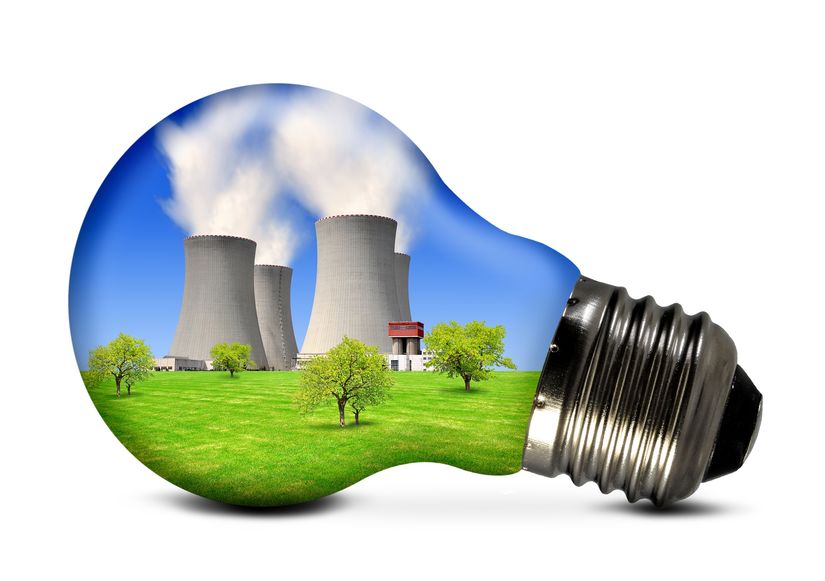What with Sam Brinton being the face of U.S. nuclear policy, is it any wonder that free-lance journalist Saul Eblein can report that the Biden Energy Department is “spending big” on nuclear energy – then lists six, maybe seven, billion in federal commitments in five areas?
The truth is that U.S. nuclear stagnation is not Biden’s, or any Democrat’s, fault. The author of nuclear negation is the nations’ greenest President ever – Richard Milhous Nixon.
The first Earth Day in 1970 (organized by Democrat Gaylord Nelson) happened during Nixon’s tenure. But it was Nixon who created the EPA and signed the Clean Air Act [1970], the Clean Water Act [1972], the Endangered Species Act [1973]. Nixon was also largely responsible for abolishing the Atomic Energy Commission in favor of the Nuclear Regulatory Commission [1974].
Until then, the American nuclear power industry was thriving. As FREOPP scholar Grant Dever writes, Congress in the 1950s incentivized nuclear power in numerous ways, with the result that utilities ordered 249 nuclear power plants from 1950 to 1974. Nuclear energy jumped from 1 terawatt-hour per year in 1960 to 144 terawatt-hours in 1974. Nuclear was far cleaner than and nearly as cheap as coal.
But the Green Wave drowned America’s nuclear expansion. As of January 1, 1971, the U.S. had about 100 codes and standards applicable to nuclear plant design and construction; by 1975, that number had surpassed 1,600, and by 1978 another 1.3 new regulatory or statutory requirements were being imposed on the nuclear industry every working day. Utilities canceled orders for new nuclear plants as the construction time (and cost) nearly tripled almost overnight.
Since 1974 there has not been a single new nuclear power plant brought online; none had even gotten NRC approval since 1978. A decade ago, the NRC approved two new nuclear plants in Georgia, but after a decade construction costs have risen from $14 billion to $30 billion and rising and the project is already seven years behind schedule. [Similarly, until this year, the U.S. had not built a single new oil and gas refinery since the Nixon-Ford days.]
Today, there is a lot of talk and actual investment in America’s private sector on nuclear energy – in large part due to the great unlikelihood that wind and solar alone can power an entire nation. CNBC reported this month that, from 2015 to 2021, the pace at which venture capitalists put money into private nuclear companies eclipsed the entire venture capital space and even the fast-growing climate tech space. Clearly, business thinks nuclear is worth a second look.
Washington has begun to “talk” about nuclear energy again – and even throw a few beads from the Mardi Gras parade led by the Sam Brintons in the Biden Administration. The largest slice of this tiny pie is a $6 billion fund established under the 2021 infrastructure bill to help keep otherwise uneconomic (over-regulated) nuclear plants from shutting down. California Governor Gavin Newsom therefore agreed to keep the state’s Diablo Canyon nuclear plant running for another five years.
The Department of Energy also announced a $12 million grant to fund scientists at national laboratories to work on advanced research into “problems at the edges of our understanding of nuclear physics.” Another $5 million will fund training for students at three universities to train electrical engineers to work on nuclear reactors.
There is $150 million allotted to produce high-assay, low-enriched uranium (HALEU) that is far more enriched than the nuclear fuel used in old-style reactors. HALEU is essential to smaller, more efficient nuclear reactors. The DOE says the U.S will need about 40 metric tons of HALEU a year by 2030.
This is important since Russia today is the only nation that produces HALEU at a commercial scale. In fact, Russia dominates the entire nuclear market, owning 40 percent of the total uranium conversion infrastructure as of 2020 and 46 percent of the total uranium enrichment capacity as of 2018. [Need we mention Uranium 1?] In fact, the only uranium conversion facility in the U.S. has been on standby since November 2017, with its reopening “pending market improvement and customer support.”
Dever points to two extremist federal policies that even today wreak havoc with American nuclear energy – and are the chief reasons why “market improvement” is not happening. The first, which dates to 1971, requires all nuclear plants to reduce radioactive emissions to an amount “as low as reasonably achievable” (ALARA) [far below even ambient levels].
The second is the Linear No Threshold (LNT) model, whose assumptions about risk exposure are exacerbated far beyond empirical evidence. While NRC and the EPA endorse the LNT, the UN’s Scientific Committee on the Effects of Atomic Radiation long ago abandoned this standard. Lauriston Taylor, founder of the National Council on Radiation Protection and Measurements calls the LNT “a deeply immoral use of our scientific heritage.”
Given that there have been only 10 deaths associated with civilian nuclear power in the U.S. throughout the industry’s entire history, it is absurd that Americans have tolerated a regulatory stranglehold that has lengthened the lives of coal-fired power plants and other energy sources responsible for many times more deaths and illnesses (and lost workdays).
Dever claims that had the U.S. merely adopted regulations similar to those in heavily nuclear France and Ontario, its carbon emissions from coal produced electricity would have declined over the past 40 years by 45 percent – preventing 24 gigatons of carbon dioxide emissions.
Ought we not agree that federal subsidies for nuclear power are “shiny objects” that distract from the real way to boost the U.S. nuclear power industry, provide cheap, reliable, clean energy without frequent blackouts, and keep our air and water clean? The best solution, says Dever (and many others), is through regulatory reforms that reduce barriers to entry for entrepreneurs, investors, and nuclear power generators.
